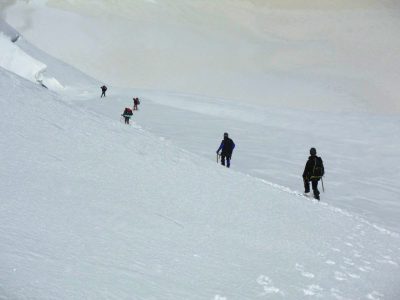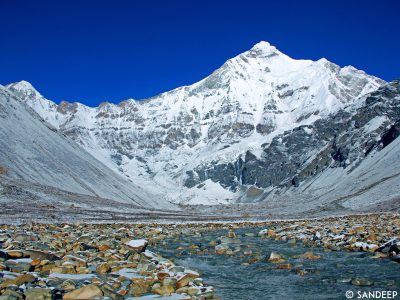Why You Should Know Mountain Terminology?
Trekking can be a fun and rewarding experience, but it’s essential to know the mountain terminology to make the most of your trek. This blog will introduce you to some of the most common terms used in mountain trekking to be better prepared before you hit the trails.
To help you understand the terminology of mountains, this blog will provide a detailed explanation of each term. Knowing these definitions will help you be better prepared for your trek and manoeuvre through the mountains more easily.
Through this blog, we hope to provide you with an understanding of basic mountain terminology and mountain geography terms, their definitions and real-world applications. This will help increase your knowledge as a trekker and mountaineer and allow you to develop a greater appreciation for God’s natural wonders – the mountains.
So, let’s get started with the definitions of some essential mountain features:
Mountain Range
A mountain range is a series of mountains close together and have a similar height. They are usually formed when two or more mountains collide, and the rocks from each mountain are pushed up and form a new mountain. The mountain range will have unique features, such as peaks, ridges and valleys.
You can also apply the definition of a mountain range to a group of hills, and the two terms are often used interchangeably. In general, a mountain range is more significant than a hill range.

Mountain Peak (Summit)
A mountain peak is the highest point on a mountain. It is usually sharp and pointed and is a great place to take in the surrounding views. Peaks can be classified according to their height, with higher peaks being more challenging to climb.
A summit or a mountain peak is often the goal of a trek or mountaineering expedition, as it is the highest point that can be reached. It is also the most extreme place to be, as it is prone to avalanches and other weather conditions. It is important to be aware of the weather conditions before attempting to climb a summit.
Trekking Peaks in India include Kedarkantha Peak Trek, Mt. Friendship Peak Trek, and Stok Kangri Trek.
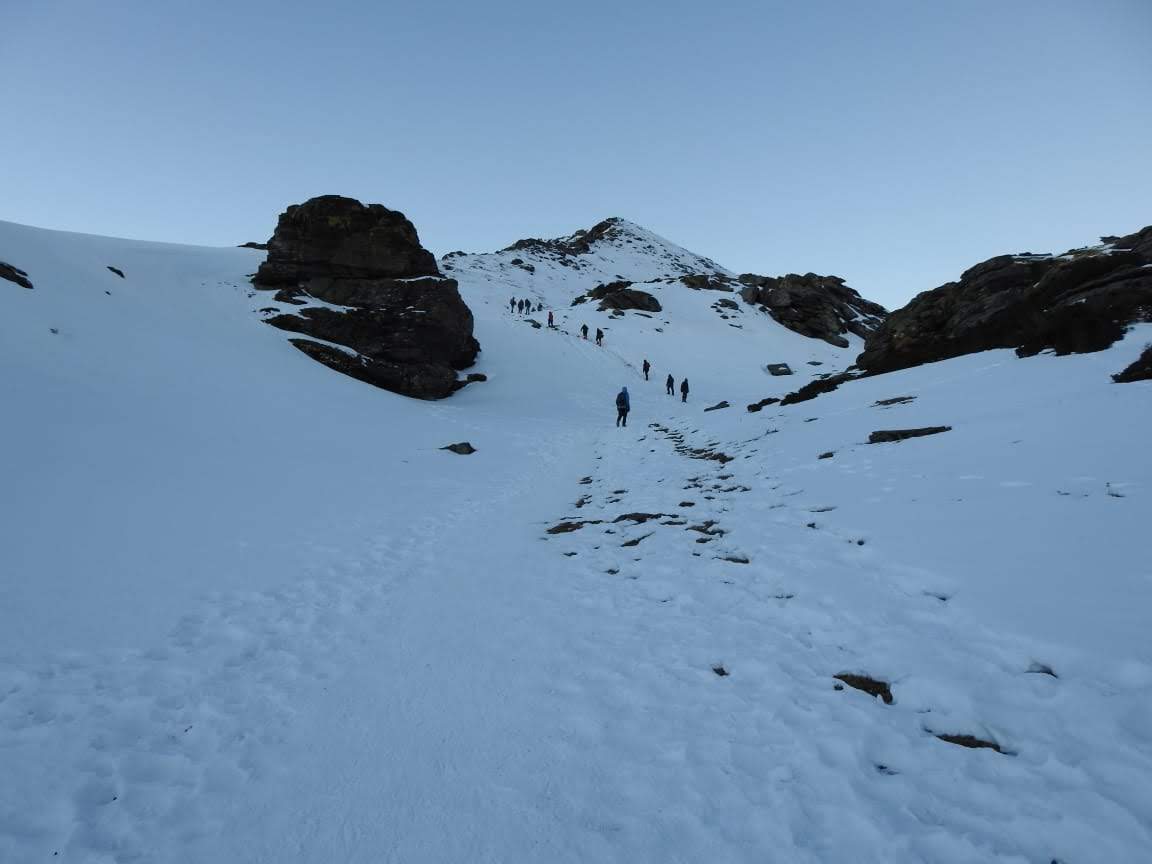
Mountain Ridge
A mountain ridge is a long, narrow strip of land that connects two mountains or hills. They are often formed when two mountains collide and the rocks from each mountain are pushed up and form a new mountain. Ridges can also be formed by glaciers, which carve out a path between two mountains.
Ridges are usually very steep and can be difficult to climb. They are also exposed to the elements.
Popular Ridge treks in India include Phulara Ridge Trek and Khopra Ridge Trek.

Mountain Valley
A mountain valley is a low-lying area between two mountains or hills. Valleys are usually formed by rivers or glaciers, which carve out a path between the mountains.
Valleys are usually much cooler than the surrounding areas, as they are sheltered from the sun. They are often very green, as the vegetation can grow in cooler, wetter conditions.
Some famous valley treks in India include Har Ki Dun Trek, Valley of Flowers Trek, and Kedartal Trek.
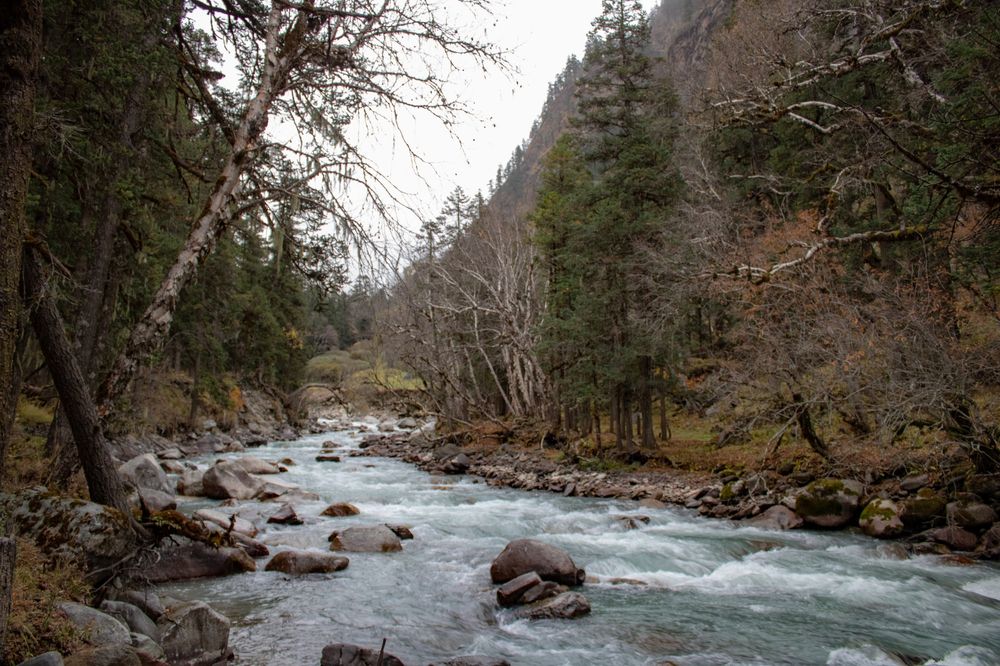
Mountain Pass
A mountain pass is a route over a mountain, typically one that is high and difficult to navigate. Travellers and traders often use them to cross mountains, and they can be essential locations for militaries. Mountain passes can be treacherous and often have cliffs on either side. Some passes are only accessible by foot, while others may have roads or railways running through them.
Mountain passes often have a long and storied history, as people have been traversing them for centuries. Many famous trekking mountain passes are Hampta Pass, Buran Ghati Pass, Rupin Pass etc.
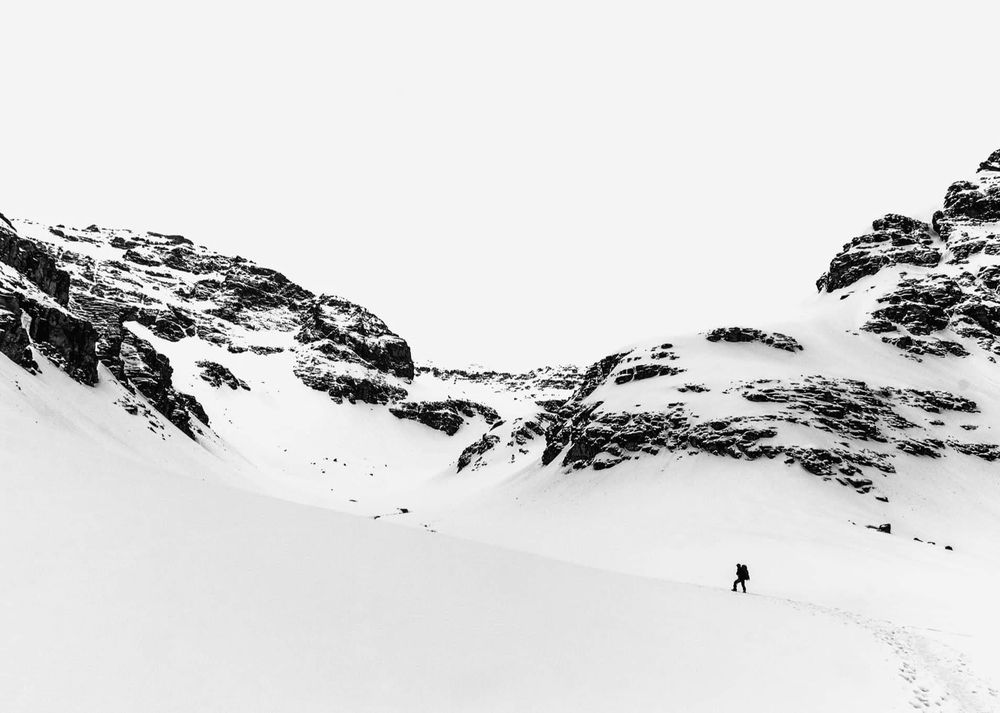
Mountain Massif
The word massif comes from the French word for “massive”. A mountain massif is a large and relatively isolated mountain or group of mountains, forming an entity in its own right. The term is typically used in the Alps and other mountain ranges of Europe.
A massif typically consists of an isolated summit with a steep rocky face on one or more sides. The term is also used to describe similar features in other parts of the world.

Altitude
Altitude is a measure of how high a point is relative to a given location. It can be measured in terms of height above sea level.
The altitude of a mountain can significantly impact the climate and vegetation in the surrounding area. High altitudes are usually colder and have less oxygen, making them difficult to live in.
However, some plants and animals are adapted to high altitudes and thrive in these conditions.
The term “altitude” is also used in mountaineering to refer to the height of a mountain or other natural feature. It is often used interchangeably with the word “elevation”.
Meadows
A meadow is a field of grass and flowers. They are often found in mountainous areas, as the high altitude and cooler temperatures create ideal conditions for plant growth. Meadows are often used for grazing, as they provide food for animals such as sheep and cows.
Mountain meadows are also popular trekking destinations, as they offer stunning views and a break from the harsher conditions of the mountains.
In Uttarakhand, meadows are usually called “Bugyals”, and in Himachal Pradesh, meadows may be referred to as “Thatch.”
In India, some famous meadows include the Dayara Bugyal Trek and Ali Bedni Bugyal Trek.
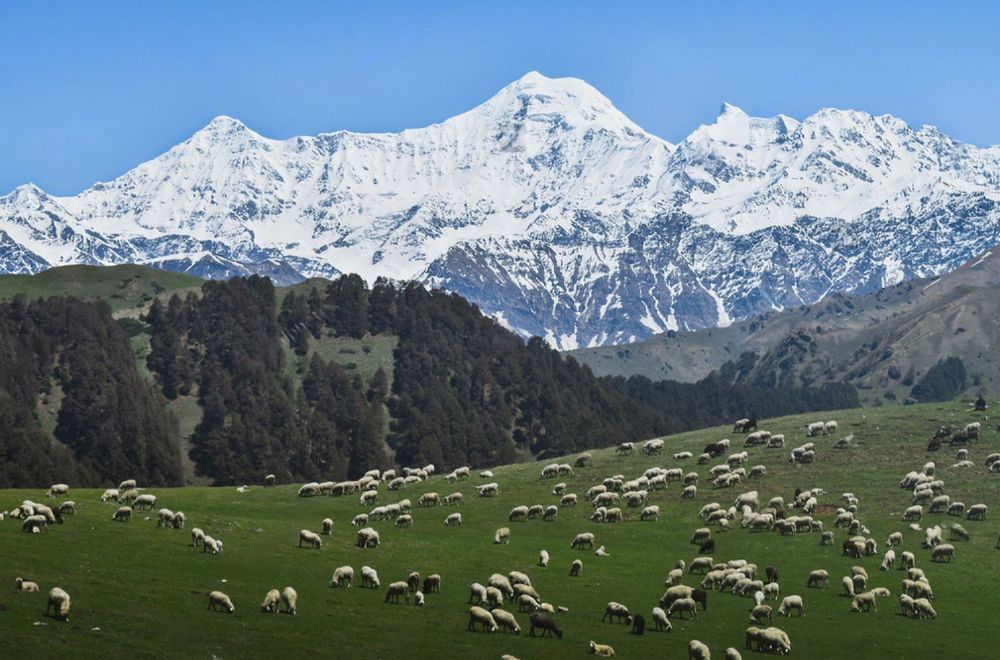
Boulders
Boulders are large rocks that have been moved by glaciers or rivers. They can be found scattered throughout the mountains and often form obstacles for trekkers and climbers.
Boulders can be challenging, as they can be unstable and may fall at any time. Trekkers and climbers should always be aware of the location of boulders and take care when traversing them.
You can find some famous boulder sections on treks like Pangarchulla Trek and Kashmir Great Lakes Trek.

Scree
Scree is a layer of loose rock that covers the slopes of mountains. It is typically made up of small stones or gravel and can be unstable. Scree can make trekking and climbing difficult and dangerous, as it can give way underfoot.
It is essential to take care when traversing scree, as it can be easy to lose your footing and slide down the slope.
Scree is often found on alpine trails and in mountainous regions. Some famous treks with scree sections include the Pin Parvati Pass Trek and Mt. Yunam Peak Expedition.

Mountain Col
A Col is a high altitude pass. It is a saddle point between two mountains. It is typically lower than the peaks on either side of it. The word “col” comes from the French word for the neck.
Mountain cols are often used as routes to ascend to higher summits. They can be dangerous in bad weather, as they are constantly exposed to high winds and can be covered in snow and ice.
Mountain passes can also be classified based on their use. A trade pass is route traders use to transport goods between two markets. A military pass is a route used by armies to invade enemy territory. A pilgrim pass is a route used by religious pilgrims to reach a holy site.
Glaciers
A glacier is a large body of ice that moves slowly down a mountain. They are formed by the accumulation of snow over time. Glaciers can be found in many mountainous regions, such as the Alps, the Himalayas, and Antarctica.
Glaciers are an essential source of water for rivers and lakes. They are also a popular destination for trekkers and climbers.
Some famous glaciers in India include the Siachen Glacier and Gaumukh Glacier.

Snowfields
A snowfield is an area of land that is covered in snow. They are often found in high altitude regions, such as the Himalayas. Snowfields can be dangerous, as they are often unstable and can collapse.
Snowfields can be used for skiing, sledging, and other winter activities. They are also a popular destination for trekkers and climbers.
Verglas
Verglas is a type of ice that is very thin and smooth and formed on hard surfaces such as rocks. It is often found in winters when the water freezes on the ground in a very thin layer. This ice can be very dangerous to walk on, as it is very slippery and can be challenging to see.
Crevasse
A crevasse is a large, deep crack in the ice of a glacier. It can be several feet wide and hundreds of feet deep. Crevasses are a significant danger for trekkers and climbers, as they can be easily missed and can cause a person to fall into the ice.
Trekkers and climbers can negotiate crevasses by using a rope to secure themselves to other group members.

Avalanche
An avalanche is a large mass of snow and ice that falls down a mountainside. They can be triggered by things like loud noises or the movement of people or animals. Avalanches can be very dangerous, as they can bury people and buildings.
Avalanches are a significant danger in mountainous regions and can often be unpredictable. It is essential to be aware of the risks before undertaking any activities in avalanche-prone areas.
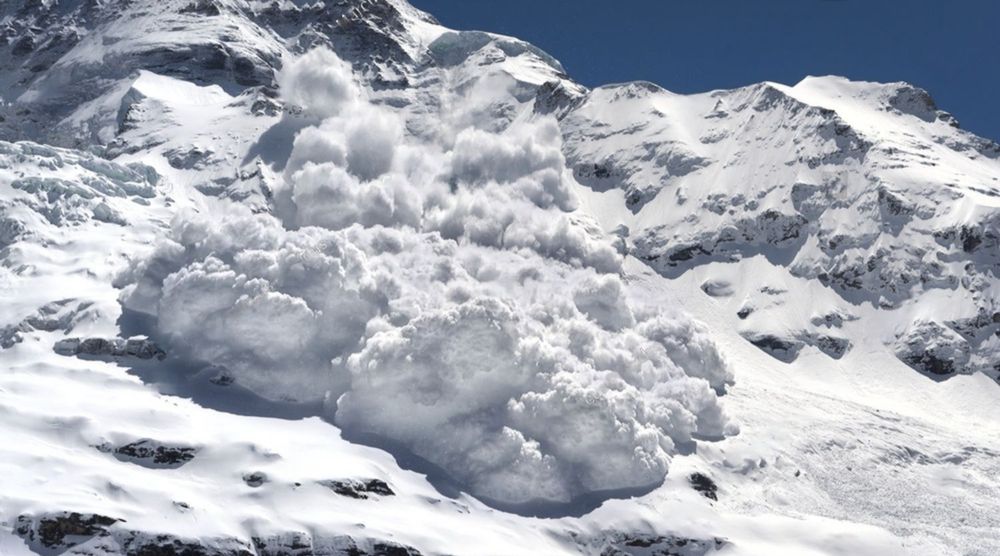
Mountain Rescue
Mountain rescue is the process of rescuing people who are trapped or injured on a mountain. It can involve searching for lost people or rescuing people who have been injured in an accident.
Mountain rescue teams are typically composed of climbers and mountaineers experienced in mountaineering and first aid. They use specialised equipment to reach people who are trapped or injured.
Mountain rescue is a dangerous and challenging task, and it is often undertaken in extreme conditions. It is essential to be prepared before undertaking any mountain activities, as the risk of an accident or injury is always present.
If you are planning on going into the mountains, let someone know your itinerary and expected return time.
If you get lost or injured, stay calm and wait for help to arrive. Do not attempt to self-rescue (if you are not trained), as this could worsen the situation.
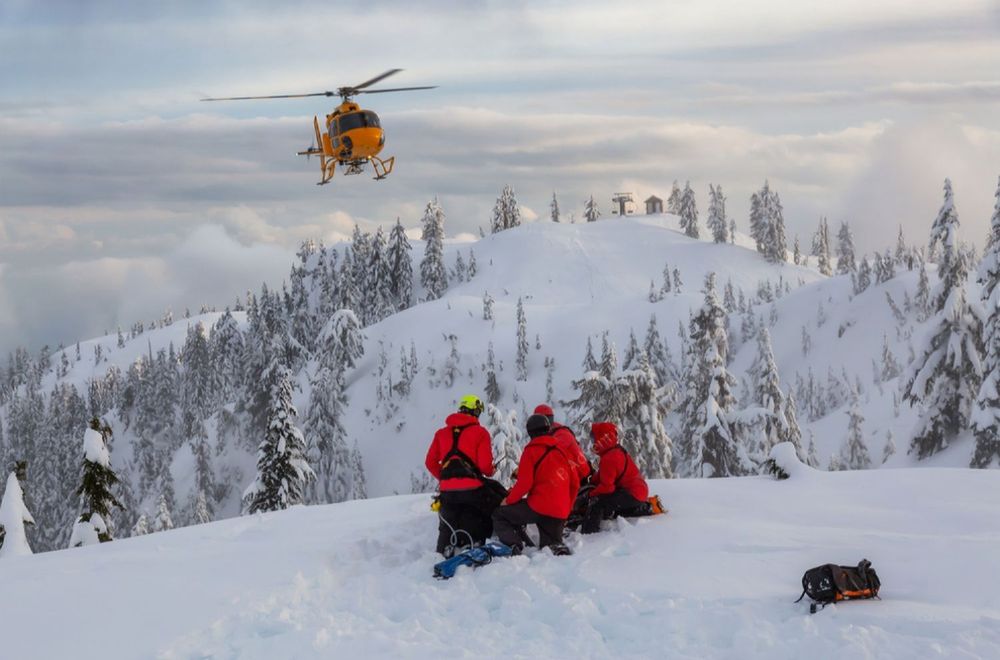
Morraine
A moraine is a collection of rocks, soil, and other debris left behind by a glacier. This debris can be either loose or compacted. Moraines can be found on the surface of the ground and underwater.
Depending on their location, they can be given different names. There are also several types of moraines, such as:
– Lateral moraines: Found on the sides of a glacier
– Medial moraines: Found in the middle of a glacier (formed when two glaciers merge)
– Terminal moraines: Found at the end of a glacier
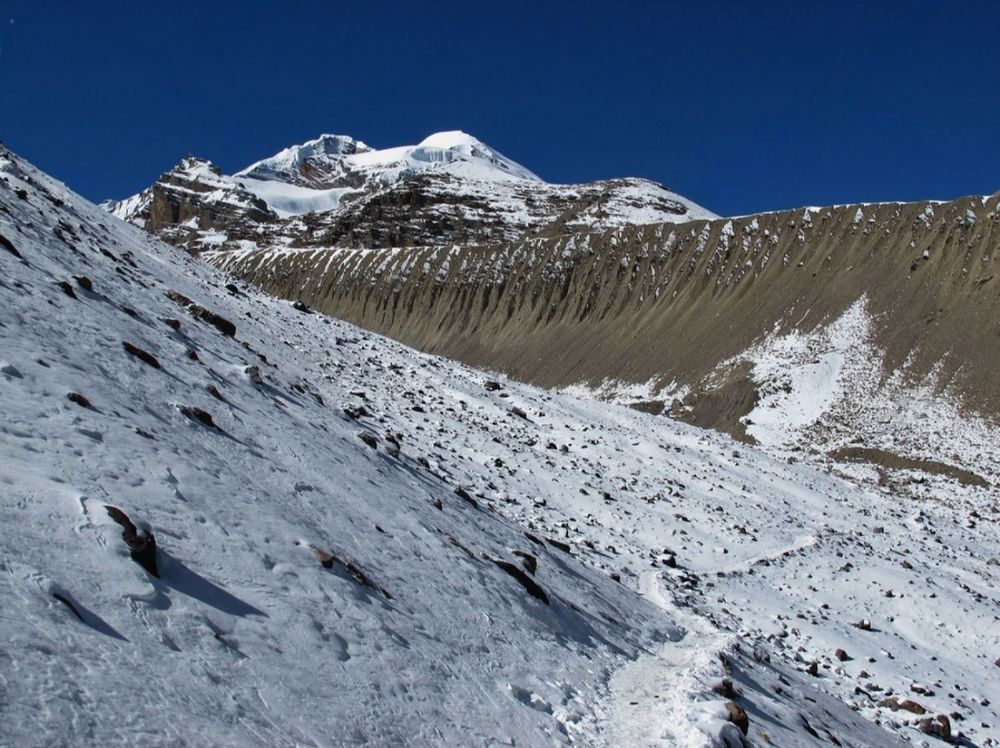
Base Camp
Base Camp is a term often used in mountaineering and trekking. It is the location where climbers and trekkers typically stay during an expedition.
Base Camp is usually located at a lower altitude than the mountain’s summit and is used as a staging area for ascending to higher heights. It is also where people can rest and acclimatise to the altitude.
Base Camps are typically well-equipped with supplies and equipment, as they need to be able to support a large number of people for an extended period.
When choosing a Base Camp, it is crucial to consider accessibility, shelter, water, and food.
Some of the most wonderful base camp treks are Annapurna Base Camp Trek and Everest Base Camp Trek.
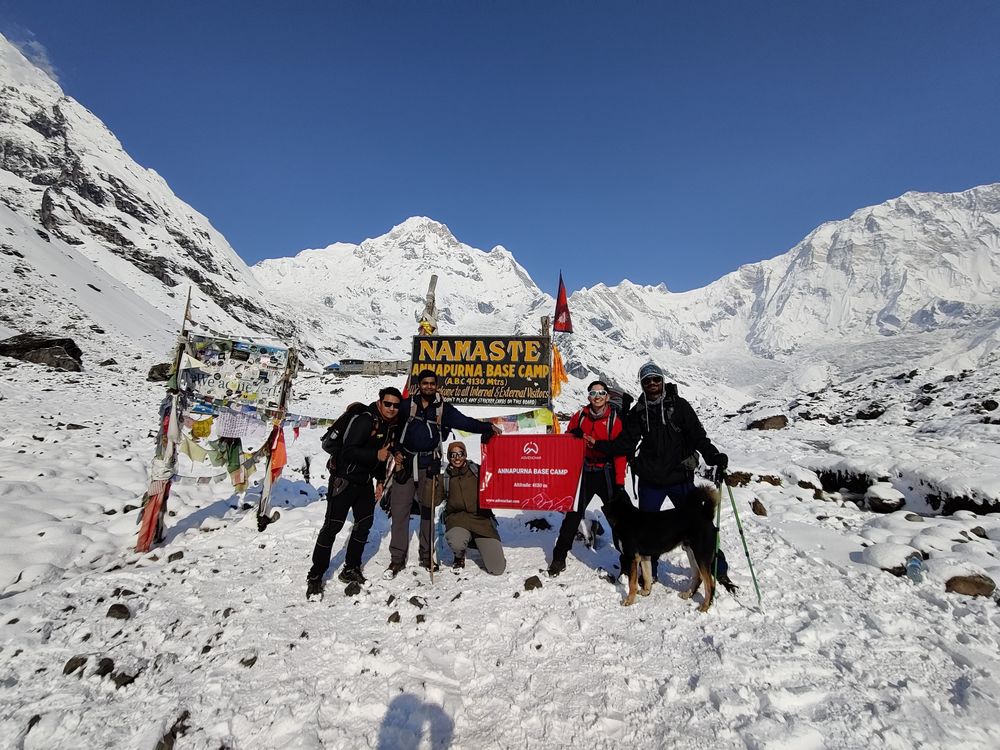
Acclimatisation
Acclimatisation is the process of adjusting to a new environment, typically one with a higher altitude.
It is a gradual process that can take several days or weeks. The body slowly adapts to the new conditions by increasing the production of red blood cells, which carry oxygen to the tissues.
While acclimatisation is taking place, it is essential to drink plenty of fluids and avoid alcohol. It is also necessary to take it easy and not over-exert yourself.
If you plan to go to a higher altitude, it is best to do it gradually to give your body time to adjust.
Cairn
A cairn is a pile of rocks used as a marker or landmark.
They are often used to mark trails so that trekkers can stay on the right path. Cairns can also be used to mark the summit of a mountain.
Building a cairn is a tradition in many cultures, and you can find it worldwide.
When building a cairn, it is crucial to use rocks that are small enough to be easily stacked. The stones should also be sturdy enough to don’t fall over.
Building a cairn is a fun way to leave your mark on a mountain, and it can also be helpful for others who are trekking the same trail.
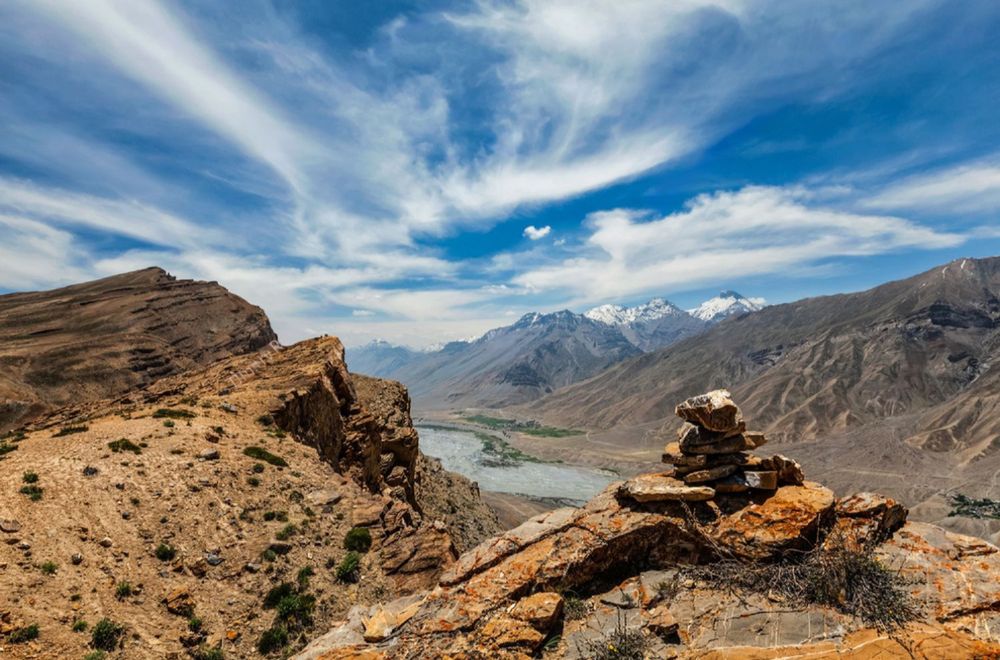
Spur
A spur is an outward projecting part of a mountain that curves away from the main body laterally. Most mountain roads cut through the spurs of mountains only. Spurs are commonly used as locations for mountain villages and towns.
This is because the spurs offer a more significant amount of flat land when compared to the rest of the mountain. They also provide a better vantage point to view the surrounding area.

Re-Entrant
A re-entrant is a valley-like formation on a mountainside that collects rainwater and provides a path for it to move downhill. Re-entrants are also known as drainage gullies.
Re-entrants can be found on all types of mountains, but they are more common on steep, mountainous terrain. They play an essential role in the water cycle, as they help move water from the mountains to the valleys below.
Snowline
The snowline is the altitude at which snow can no longer accumulate.
This line can vary depending on the type of terrain and the time of year. The snowline is generally lower in the winter and higher in the summer.
The snowline is an essential factor to consider when planning a mountaineering or winter expedition, as it will determine how much snow and ice you will encounter.
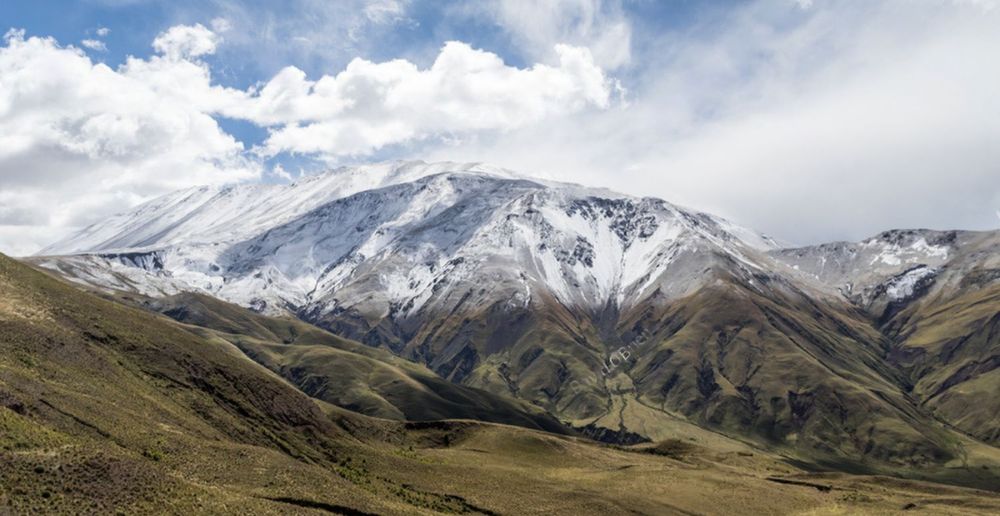
Treeline
A treeline is a boundary between a forest and an alpine area where trees can no longer grow because of the low temperatures and lack of precipitation. Above the treeline, trees cannot grow because conditions are too harsh.
The treeline is an essential boundary for mountain climbers and hikers. It marks the end of the forest and the beginning of the alpine area. The alpine zone is more rugged and challenging to traverse than the forest.
It is also an essential ecological boundary. The forest and the alpine area are two distinct ecosystems with different plants and animals. Above the treeline, the climate is too harsh for trees to grow. This means that the treeline is a sharp boundary between these two ecosystems.
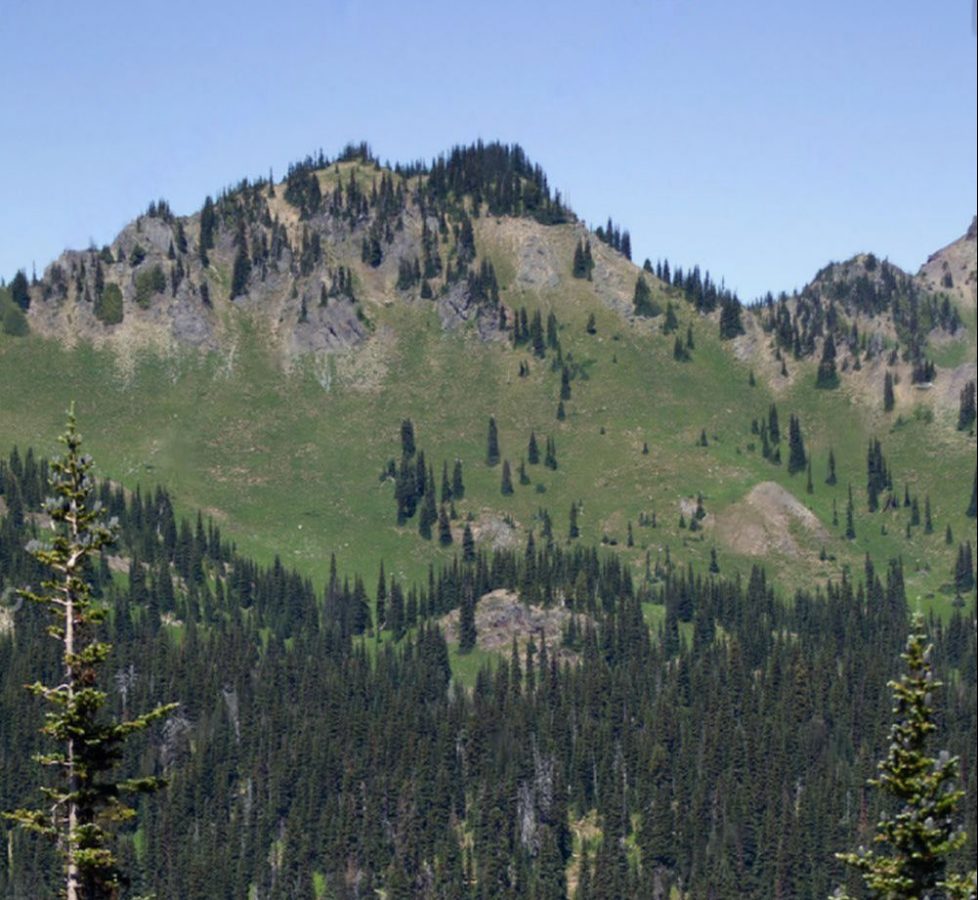
Now that you know more about mountain terminology and mountain terms, you can better understand the features of mountains and the landscape around you. Knowing these terms will also help you communicate with other climbers and trekkers.
So next time you’re out on a trek, keep an eye out for these features!
Let us know in the comments below if you have any questions or if there’s anything we missed.
Happy trekking!



